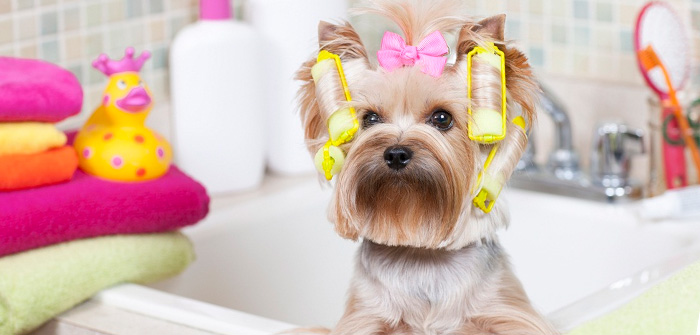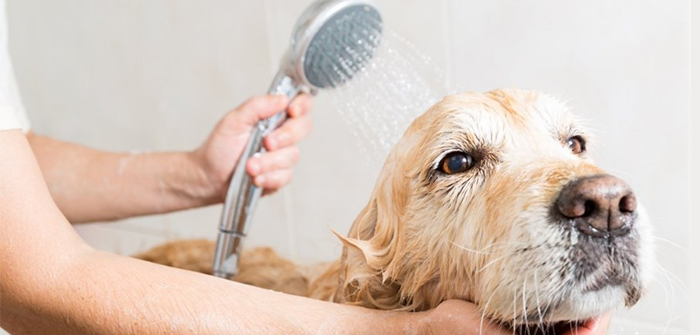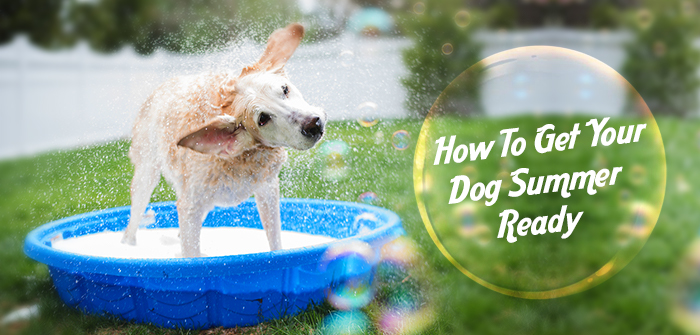How To Get Your Dog Summer Ready
Summer is a wonderful season to spend afternoons with your dog in the sun, at the beach, hiking, and doing a variety of other fun activities. Summer, with all of the fun and excitement it offers, also has its own set of hazards that pet parents should be aware of. Understanding these dangers and how to prepare your dog for summer will make your time with your canine companion more enjoyable.
The summer heat might be dangerous to your dog, but it isn’t the only danger. A lot of pests go dormant in the winter and then start crawling around again once summer arrives.
It’s not just about the basics when it comes to caring for a dog in the heat. Preparing your dog for summer may cost a little additional time and money, but it will make things a lot simpler for both of you in the long run.
How to Prepare Your Dog for Summer
# Preventing Dehydration
Hydration is crucial in any season, especially in the summer, whether indoors or out. A constant supply of fresh, cool, clean water is essential for any dog who stays outside. A dog with enough water will not be drawn to standing water, which can carry parasites and poisons, in addition to preventing dehydration.
There are various ways to ensure that your dog has access to fresh water at all times. An automatic water dispenser is one of the simplest and most convenient techniques. Some of them offer a direct connection to an exterior hose to ensure that there is always fresh, clean water accessible. Others require you to keep an eye on the water level in the reservoir and refill it as needed.
# Preventing Heat Stroke
Heatstroke is a very real danger for dogs. It is something that you should take extremely seriously. Heatstroke can result in nausea, damage to the brain, loss of consciousness, and even death. When it’s hot outside, even a short stroll might cause your dog to overheat, especially if your dog is senior or overweight.
If your dog appears to be suffering from the heat, take him to a cool location with plenty of water and drape a cool, moist towel on his backside. Take him to your veterinarian or an animal emergency clinic if he doesn’t improve within a few minutes.
# Preventing Fleas and Ticks
Fleas and ticks remain dormant in the winter, but they are quite active in the summer. Fleas are particularly easy to catch. They can be found in practically every outdoor temperature, and they can also be acquired by your pet from other animals. Ticks are more active outside, where they can be found in thick grass, undergrowth, around woodpiles, and forested places.
Check your dog for fleas and ticks on a regular basis, and use a preventive treatment to keep them away. There are varieties of flea and tick treatments available, including collars, oral pills, and topical liquids that can be applied directly to the dog’s skin. An oral pill/chew may be the best solution if your dog has skin sensitivity. Before starting any flea and tick treatment on your dog, make sure to discuss it with your veterinarian.
# Grooming
During the summer, dogs need to be groomed more frequently. Brushing hair every day not only helps to detect hot spots and other skin irritations, as well as fleas and ticks, but it also removes mats and superfluous hair. For dogs with thick fur or an undercoat, this is especially crucial.
The coat of a dog was created by nature to help it maintain its body temperature. In the summer, it keeps your dog cool, and in the winter, it keeps him warm. Shaving, cutting, or extreme trimming disrupts your dog’s natural cooling mechanism, which can be harmful. If you do decide to clip him, leave at least an inch of fur on him. This should leave him with enough of a coat to allow his natural cooling and heating system to function.
# The Natural Environment
One thing to keep in mind when learning how to prepare your dog for summer is that we, as pet parents, may utilize chemicals that are dangerous to our dogs throughout the heat. Not talking about the chemicals you use to clean your kitchen counters; it is the pesticides you use in your yard, which could be toxic to dogs. Not to mention the fact that many common flora and flowers are toxic to dogs. Look for dangerous plants in your garden. Fertilizers, pesticides and herbicides, and compost piles are all major sources of poisoning in dogs. Always examine the components of any chemical you use on your lawn or garden.
Bottom Line:
Summer is a wonderful time to get outside and spend time with your pet, but you must exercise caution. Being a responsible pet parent includes knowing how to prepare your dog for the summer. On those hot summer days, the better prepared you are, the more joyful moments you and your pet will have.
Up Next…
May you want to check out some of our related articles for your canine pals!

Tips To Maintain Hygiene – Pet Owners Guide
Stay acquainted with all the precautions and preventions which should be practiced for safe parenting and healthy life. You must have heard that people always talk about the shortcomings of having pets….. Read More

Essential Dog Bathing Tips To Skip The Bath Time Battle
When you share your home with a dog, it is very important to implement good hygiene boundaries within the home……Read More
Knowledge is meant to be shared…


